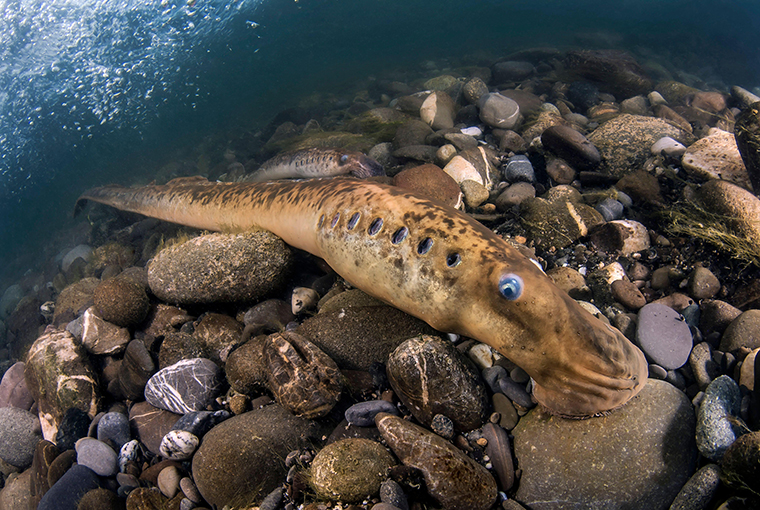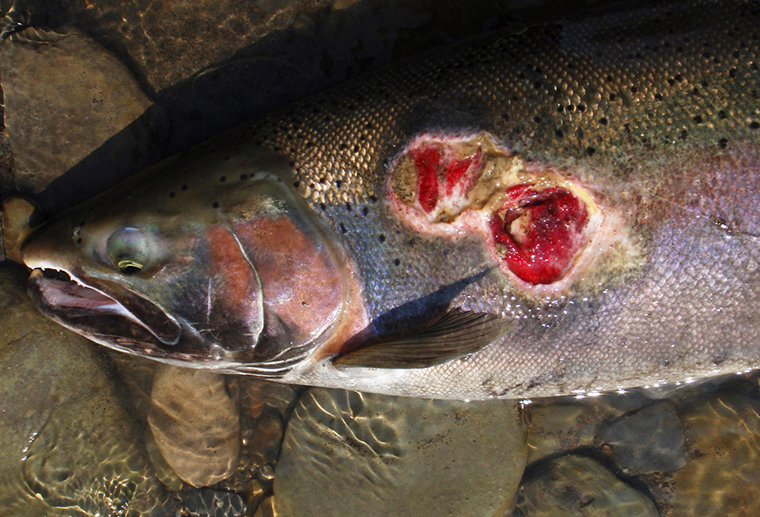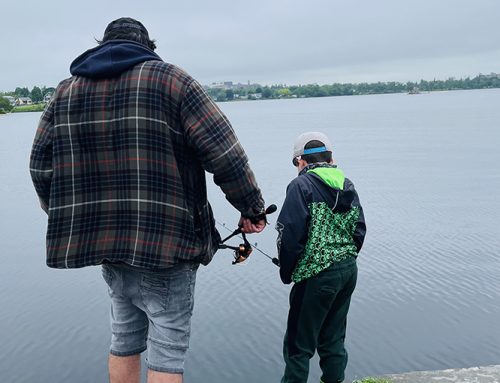
Sea lamprey are despised by many anglers. These invaders from the ocean have wreaked havoc with Great Lakes fisheries, where species did not evolve alongside them. In the Atlantic Ocean, where sea lamprey are native, fish preyed on by a lamprey are able to recover. In the Great Lakes, lake trout, lake whitefish, and cisco are the primary prey. During the 1960s, the commercial fisheries for these species dropped to 2% of its normal total due to lamprey predation.
Fortunately, the sea lamprey control program is a growing success story. The Great Lakes Fishery Commission uses lampricide to kill lamprey larvae but not fish, and control measures in tributaries stop adult lamprey from reaching spawning areas. Here are more facts about these fascinating creatures.
Know your sea lamprey
A female can lay 100,000 eggs. About 10%, or 10,000, survive to adulthood. Born without eyes, fins, or teeth, sea lamprey larvae hatch in streams and rivers, feeding on plankton and detritus for three to 10 years. Then the young metamorphosize, developing eyes, a sucking disc with sharp teeth and a razor-sharp tongue, before beginning the journey to the lake. They are an ancient species that was around before the dinosaurs. They don’t have bones, but instead, like sharks, have a cartilaginous skeleton.
By the time sea lamprey enter spawning streams, they are almost blind, meaning they need to rely on their sense of smell to find mates. They die after spawning.
A single sea lamprey can kill up to 21 kilograms of fish during its time in the Great Lakes. Prior to control measures, it’s estimated sea lamprey killed 100 million pounds of Great Lakes fish annually. Lamprey control measures have cut the fish kill to less than 10 million pounds annually.
Although not large, they are strong. A single lamprey can move rocks the size of baseballs with its mouth. Sea lamprey only feed on cold-blooded fish. They won’t attack humans.
The first sea lamprey was observed in the Great Lakes in Lake Ontario in 1835. Improvements in the Welland Canal allowed the invasive into Lake Erie by 1921. They reached Lake Huron by 1937 and Lake Superior by 1938.
Since they don’t have bones, there is no jaw. Instead, they have a large oral sucking disc with sharp teeth and a rasping tongue. Lamprey use the suction action of their mouth to attach to fish and then uses its tongue to rasp through the fish’s scales and skin. They then excrete an enzyme to prevent the fish’s blood from clotting while feeding on it. If the fish isn’t killed by the lamprey removing its blood, infection could set in.

A steelhead showing horrific wounds caused by lamprey.
Originally published in the June-July 2024 issue of Ontario OUT of DOORS






Leave A Comment